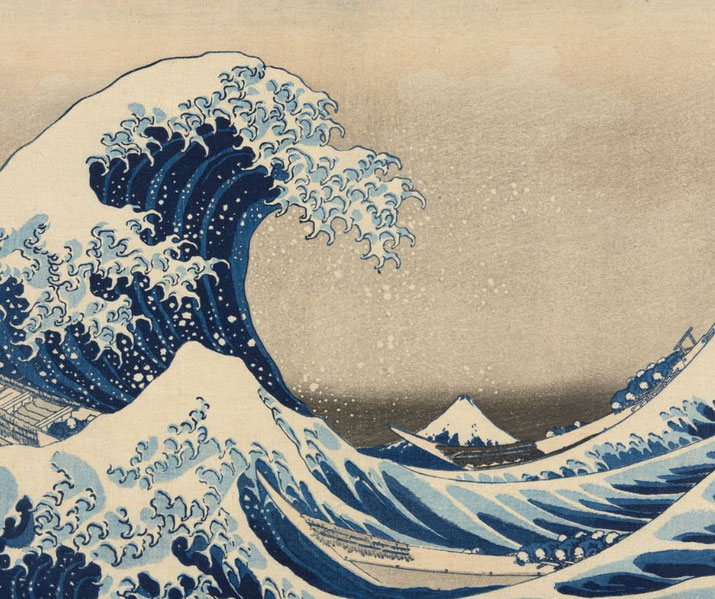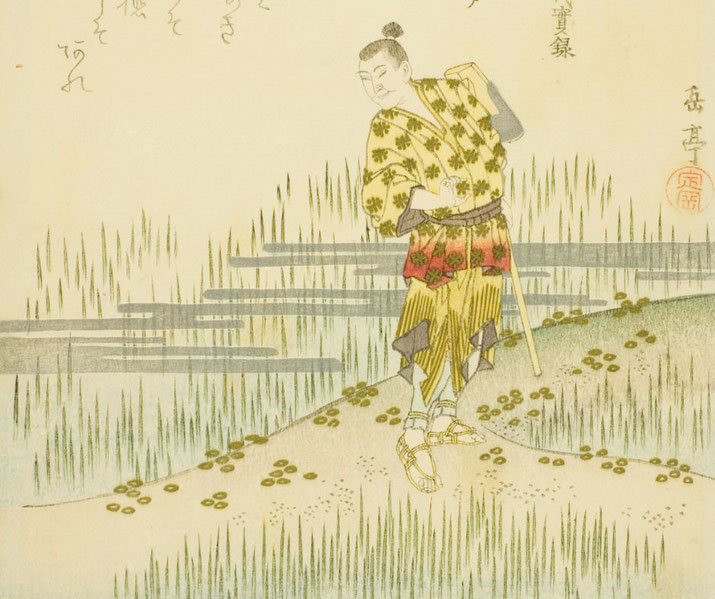What was the Edo Period of Japanese history?

The Edo Period was a period of Japanese history which extended from AD 1600 to 1868.
During this period, Japan's ruling shogunate was officially established and the seat of power was moved from rural areas to more urbanized regions, most notably present-day Tokyo.
It is also known as the Tokugawa Period, which refers to the ruling shogunate family of Tokugawa Ieyasu, who seized power at around 1600.
The period received its name from the capital city of Edo (now called Tokyo), which served as both the seat of power and home to a large urban center.
The first Tokugawa shoguns
The Tokugawa shogunate was officially established at the beginning of the Edo Period, after Tokugawa Ieyasu defeated the last supporters of Toyotomi Hideyoshi in the Battle of Sekigahara in 1600.
Tokugawa Ieyasu was famous for being a brutal warlord as well as an effective administrator, giving allies strategic land allocations and controlling enemies by issuing regulations to contain them.
Ieyasu died in 1616 leaving his son, Tokugawa Hidetada, in control.
Hidetada continued with his father's government structure, but was fearful of outside influence so started limiting foreign trading and banned Christianity.
The third Tokugawa shogunate was held by Tokugawa Iemitsu who became shogun in 1623 at the age of nineteen, when his father Hidetada retired. Although Iemitsu was shogunate in name only, as his father continued to wield power until his death in 1632.
Iemitsu most well-known for shutting Japan to outside influences and for being extremely isolationist, as well as continuing to persecute Christians as his father had done.
The shogunate system
Before Ieyasu's rise to power, Japan was plagued with civil wars and other lords were constantly trying to overthrow each other.
However, under his leadership things became much more peaceful and there was almost no internal conflict until the very end of the Edo Period.
The shogunate system was a political organization in which an individual dictator ruled with complete authority, especially over military matters.
In order to sustain their rule, leaders often built up a base of support by giving handouts to other social classes such as peasants and artisans.
The Tokugawa shogunate had complete control over foreign affairs and by the end of the period only allowed trade through designated ports on the west coast of Japan.
They also controlled travel by forcing all Japanese to stay within their fiefs. People were not allowed to leave without permission or else they would be harshly punished.
The shogunate kept the emperor in place as the head of state, but only used him for official matters such as addressing foreign dignitaries.
The shogunate did all the ruling while the emperor was responsible for cultural and religious ceremonies.

Isolationism
Tokugawa Iemitsu closed Japan off from the world because he believed that the country was under threat of foreign invasion.
The main threats he worried about were Christianity and trade with foreigners, which Iemitsu believed would destroy Japanese culture.
The shogunate's policies were so strict that foreign ships that sailed too close to Japanese vessels were at risk of having their cargo confiscated.
Japanese people were also banned from engaging in overseas trade and the government limited their access to foreign ideas.
As a result, Japan became cut off from the rest of the world which helped bring about peace within the country.
Foreign trade was not completely banned, however. The shogunate allowed trade to take place with China, Korea and the Netherlands through non-Japanese merchants who lived in designated trading areas.
The Dutch were one of the only Westerners welcomed into Japan during this time period because they had much to offer in terms of technology.
However, they were only allowed in the port city of Nagasaki.
Besides being able to ship weapons and other goods, the Dutch also brought ideas about manufacturing and medicine.
However, most of these goods were only available to the samurai class.
Social and political changes
During this period, the Tokugawa clan consolidated its control over Japan to determine the social hierarchy for centuries to come.
This was known as a class or caste system, which was strictly enforced by the Tokugawa rulers through several sumptuary laws.
At the top of this class structure were members of the Tokugawa clan followed by "daimyōs" (feudal lords), warriors, peasants and artisans.
Peasants made up 70% of Japan's total population at that time.
During the Edo Period, the samurai class changed from being professional military warriors to an elite social class.
Rather than spending their time learning fighting skills and battle formations, members of the samurai became powerful bureaucrats.
In fact, many samurai were given high positions in the Tokugawa shogunate.
Samurai studied a variety of subjects such as Confucianism and "Rangaku" or Dutch studies which was a discipline that combined scientific knowledge with Western medicine and adaptations of European mechanical technology to distinguish it from Eastern mechanical technology.

Rise of merchant classes
During the Tokugawa Shogunate, Japan experienced a rise in technology which was partially due to contact with the Dutch.
Some of the main exports of the Dutch were gunpowder and cannons. The new technologies enabled feudal lords to build up armies of trained warriors who were loyal to them rather than the shogun.
In return for their loyalty, lords gave samurai a fixed stipend of rice each year. Rice could be easily stored and sold as needed.
Since samurai had more money and time on their hands as there wasn't a lot of conflict during this time, the demand for goods increased.
Merchants were happy to take advantage of this opportunity because they could open shops in cities that were previously inaccessible due to travel restrictions.
They also started providing services that feudal lords needed which was a good way for merchants to gain more power within the government class.
Eventually, the government started to change hands from feudal lords to more of a merchant-dominated government.
An example of this is when Iemitsu went against his father's wishes and would not allow any samurai families with less than ten generations of nobility into the shogunate.
This was done so that merchants could be considered for important roles in government without having to worry about nobles trying to overthrow them.
Popular forms of entertainment
Samurai would spend much of their time practicing martial arts and playing board games.
These games were one of the main forms of entertainment among samurai because they allowed them to prove who was the best fighter while also providing an opportunity for socializing with other warriors.
Theatre also became an important cultural pastime for the Japanese people. During the Edo Period, Kabuki was a form of entertainment for commoners and became hugely popular throughout Japan.
Theater performances revolved around love stories, heroic tales and great adventures during this time.
Actors would portray different types of characters such as samurai, doctors and merchants and would be judged by how well they could play their role.

What do you need help with?
Download ready-to-use digital learning resources
Copyright © History Skills 2014-2025.
Contact via email
With the exception of links to external sites, some historical sources and extracts from specific publications, all content on this website is copyrighted by History Skills. This content may not be copied, republished or redistributed without written permission from the website creator. Please use the Contact page to obtain relevant permission.





